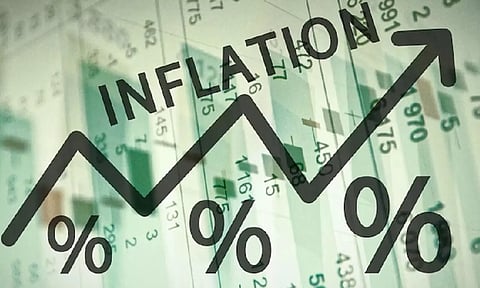

MUMBAI: Bucking the trend, retail inflation in India rose considerably in June to 4.81 per cent, largely due to a sharp spurt in vegetable prices. The inflation index for rural and urban was 4.72 per cent and 4.96 per cent, respectively. Back in May, the retail inflation was at 4.25 per cent, hitting a two-year low. It was at 4.7 per cent in April and 5.7 per cent the previous month.
According to the Ministry of Statistics and Programme Implementation data released Wednesday, the provisional index number for vegetables rose from 161.0 in May to 180.6 in June. Vegetables have a 6 per cent weightage on the overall retail inflation. The rise in inflation could partly be attributed to the current spurt in tomato prices across India. The rise in tomato prices is reported across the country, and not just limited to a particular region or geography. In key cities, it rose to as high as Rs 150-160 per kg. Besides vegetables, meat and fish; eggs; pulses and products; spices indices too saw an uptick.
Meanwhile, amid a sharp spurt in tomato prices across the country, the Central government on Wednesday directed its agencies – NAFED and NCCF -- to immediately procure the staple vegetable from mandis in key growing states of Andhra Pradesh, Karnataka, and Maharashtra. Notably, retail inflation (Consumer Price Index) in India peaked at 7.8 per cent in April 2022, driven by a reduction in food and core inflation. In some advanced countries, inflation had in fact touched a multi-decade high and even breached the 10 per cent mark.
RBI's consistent monetary policy tightening since mid-2022 could be attributed to the substantial decline in inflation numbers in India. India's retail inflation was above RBI's 6 per cent target for three consecutive quarters and had managed to fall back to the RBI's comfort zone only in November 2022. Under the flexible inflation targeting framework, the RBI is deemed to have failed in managing price rises if the CPI-based inflation is outside the 2-6 per cent range for three quarters in a row. Barring the recent pauses, the RBI has raised the repo rate by 250 basis points cumulatively since May 2022 in the fight against inflation.
Raising interest rates is a monetary policy instrument that typically helps suppress demand in the economy, thereby helping the inflation rate decline. Following are some of the excerpts of views from analysts and experts on the June retail inflation numbers:
Soumya Kanti Ghosh, Group Chief Economic Adviser, SBI: Though, retail inflation remains within the tolerance range of the RBI for the fourth consecutive month (and should remain so for the rest of the fiscal), continued vigil on the evolving inflation outlook is warranted given the erratic progress of monsoon and its impact on Kharif sowing and subsequently on pulse inflation.
CareEdge Ratings: The rise in sequential momentum of food inflation is concerning. The share of food inflation in the headline inflation has risen to 44 per cent from 36 per cent in the previous month. While a part of the increase in food prices is seasonal, for some items like vegetables, the increase is more than the seasonal pattern seen in previous years. With high inflation for basic food items like rice, pulses, vegetables and milk, the Central Bank will be concerned about the adverse impact on household inflationary expectations.
Progress of the monsoon in July would be specifically critical. If the spatial distribution of rainfall remains skewed, it could have an adverse impact on kharif sowing and further aggravate food inflation, going forward. Due to excessive rainfall in some regions, the total sown area of items such as rice, pulses and oilseeds is already lower than last year, which is worrisome. While food inflation is concerning, the comforting factor is that the WPI has been contracting. Deflation in WPI will have a lagged impact on CPI inflation going forward. Having said that, RBI would remain cautious and adopt a wait-and-watch mode. We reaffirm our view that RBI would maintain an extended pause (in repo rate) in 2023.